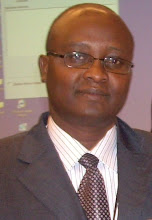 In a case that has extended over a period of 13 years, the High Court of Kenya has ruled in favour of the plaintiff, Macmillan Kenya Ltd who instituted the suit against Mount Kenya Sundries Ltd for copyright infringement of the plaintiff’s two maps named “Kenya Tourist Map” and “Kenya Traveller’s Map”.
In a case that has extended over a period of 13 years, the High Court of Kenya has ruled in favour of the plaintiff, Macmillan Kenya Ltd who instituted the suit against Mount Kenya Sundries Ltd for copyright infringement of the plaintiff’s two maps named “Kenya Tourist Map” and “Kenya Traveller’s Map”.
In explaining the delay in commencement of the case, Justice Visram observed that whereas the suit was filed in 1995, it was not until 2003 when hearing commenced before Justice Githinji who was then a High Court Judge, before his appointment to the Court of Appeal. Thereafter the trial was further delayed because the proceedings before Justice Githinji had to be typed before a new judge could take over.
The law applicable at the time of filing of the suit was the repealed Copyright Act, Cap 130 and the claim was therefore governed by that Act. The plaintiff sought and was granted judgement for (1) an injunction, (2) an order for delivery up, (3) an inquiry as to damages or account of profit and (4) interest and costs.
In defence, the defendant contended that the plaintiff had no locus standi to bring the action because the maps in question bore a copyright notation of a British Company, Macmillan Publishers Ltd who was not a party to the suit. The defendant also counterclaimed that it was the plaintiff who had in fact infringed its copyright over its map, which was produced in 1990. As such and according to the court, the main issue was “whose map was first in time”.
On the question of locus standi, the court, citing Copinger & Skone James on Copyright (14th Edition) held that
* a person entitled to a copyright in equity may start an action and seek interlocutory relief relying on his equitable title.The court held that there was evidence that the British Company was the holding company of the plaintiff on whose behalf the maps were actually made. This made the plaintiff an equitable owner. In the meantime, the plaintiff had also obtained an assignment from the parent company and therefore had the locus standii to sue.
* the person, however, will not be entitled to final relief unless he has either joined the legal owner as a party (co-plaintiff or defendant) or obtained assignment of the legal title.
On the question of which map was produced first, the defendant argued that the plaintiff’s second map was not produced in 1989 but in 1990 after its own map had been produced and as such it was the plaintiff who was liable for infringement.
However, the plaintiff tendered evidence, which was accepted by the court, showing that its first map was produced in 1985 and the 1989 one was an improved version. On this, the court held that the plaintiff’s map was produced first and “given that the plaintiff had expended sufficient work in making the map”, the plaintiff enjoyed copyright protection. In addition, the plaintiff presented original notes and research materials that enabled the plaintiff to draw the map. According to the court, this strongly demonstrated the amount of work invested in producing the maps to give them an original character thus making them eligible for copyright protection.
The final question to be determined was whether the defendant’s map was substantially copied from the plaintiff’s map. Upon comparison of the two maps, the plaintiff’s expert witness demonstrated (and it was accepted by the court) that the plaintiff’s transparencies used to produce the map were the same as the defendant’s save for the fact that the defendant map was reduced to 64% of the plaintiff’s map. According to the expert, the defendant map bore “glaring similarities” with those of the plaintiff’s, which demonstrated a clear case of copying by the defendant.
The defendant was not helped by its two expert witnesses whose evidence did not impress the court as being consistent and truthful. Indeed the defendant’s second expert witness was found to have copied his report dated 27th September 200 from that of the first expert witness dated 13th November 1996.
From the evidence presented, Justice Visram concluded that there were huge similarities between the maps even to an ordinary person and the defendant had substantially copied from the plaintiff’s work. Relying on the case of Alternative Media v Safaricom Ltd (2005) eKLR, his Honour held that “infringement of copyright arises not because the defendant’s work resembles the plaintiff’s, but because the defendant had copied all or substantial part of the plaintiff’s work”.
The case can be downloaded here.








